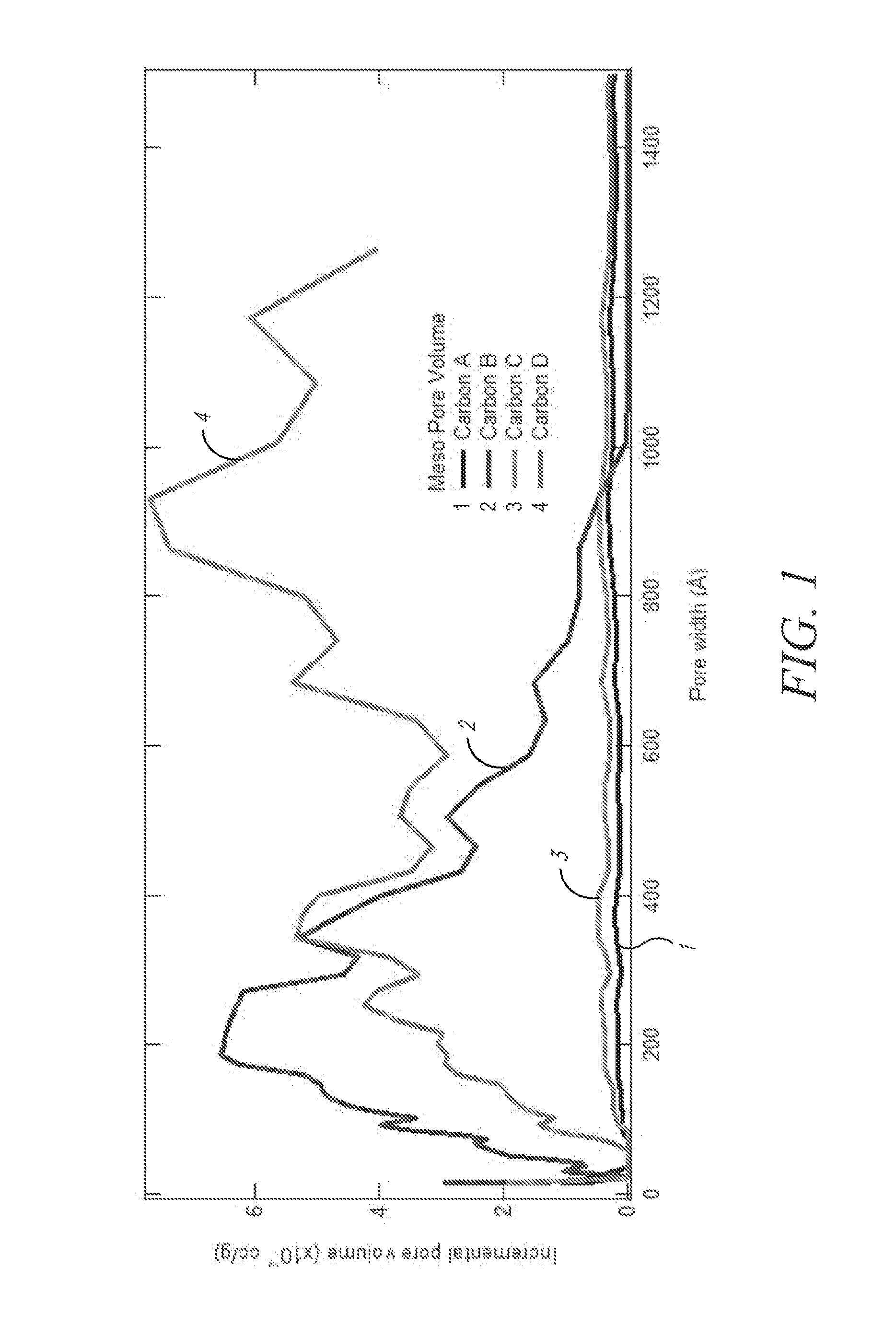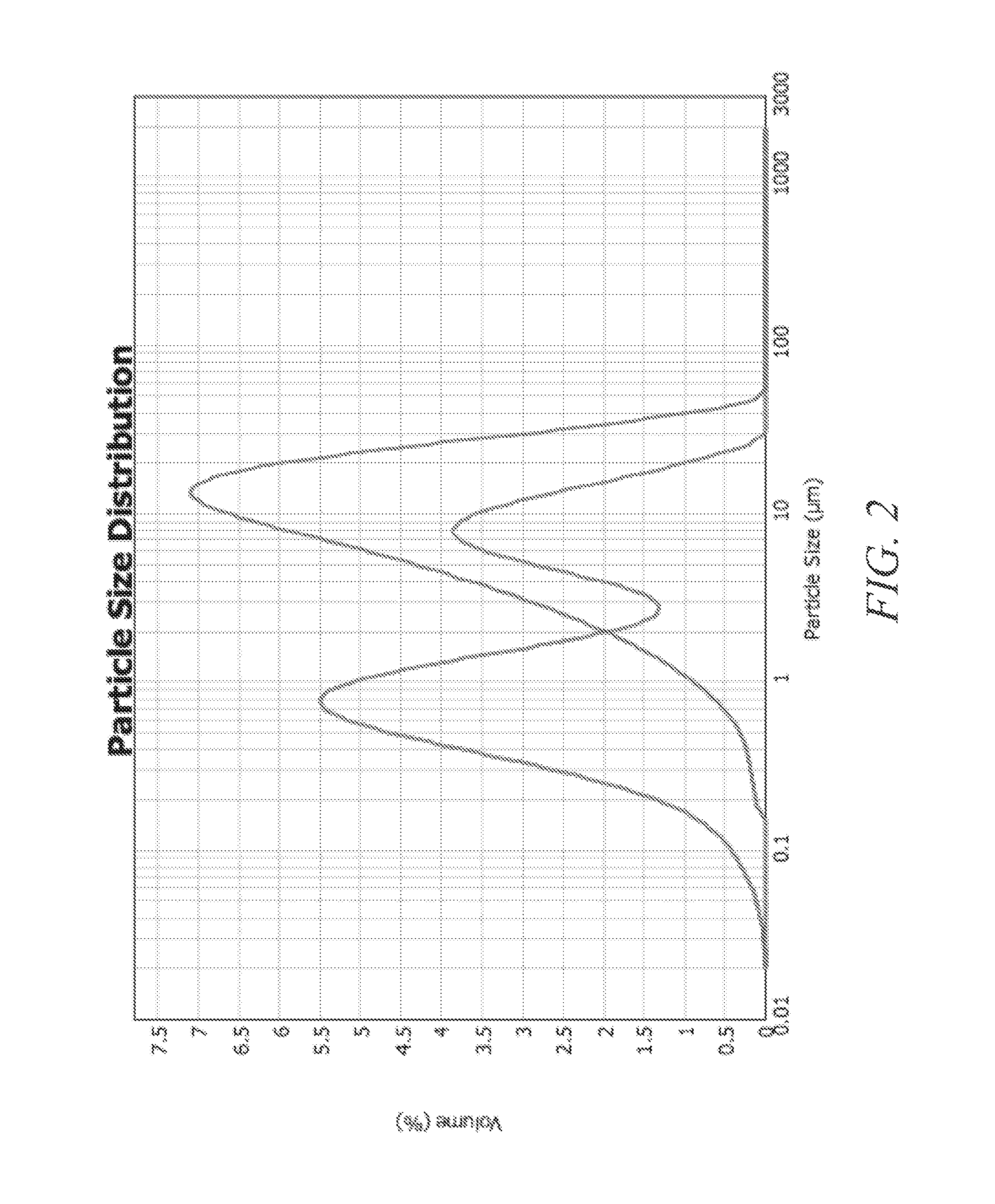High capacity hard carbon materials comprising efficiency enhancers
a technology of hard carbon materials and efficiency enhancers, which is applied in the direction of cell components, electrochemical generators, cell components, etc., can solve the problems of low power performance and limited capacity of graphitic anodes, insufficient current lead acid automobile batteries for next-generation all-electric and hybrid electric vehicles, and low power performance of graphitic anodes, etc., to achieve optimized lithium storage and utilization properties, high reversible capacity, and high first cycle efficiency
- Summary
- Abstract
- Description
- Claims
- Application Information
AI Technical Summary
Benefits of technology
Problems solved by technology
Method used
Image
Examples
example 1
Monolith Preparation of Polymer Gel with Hardening Agent
[0315]Polymer resins were prepared using the following general procedure. A Poly[(phenol glycidyl ether)-(co-formaldehyde)] with 340-570 repeating molecular units was dissolved in acetone (50:50). Phthalic Anhydride (25:75) was added to the solution and shaken until dissolved. 85% (wt / wt) Phosphoric Acid in water was then added to the solution and shaken. The reaction solution was placed at elevated temperature (55° C. for about 12 hr followed by curing at 120° C. for 6 hr) to allow for the resin to crosslink.
example 2
Monolith Preparation of Polymer Gel without Hardening Agent
[0316]Polymer resins were prepared using the following general procedure. A Poly[(phenol glycidyl ether)-(co-formaldehyde)] with 340-570 repeating molecular units was dissolved in acetone (50:50). 85% (wt / wt) Phosphoric Acid in water was then added to the solution and shaken. The reaction solution was placed at elevated temperature (55° C. for about 12 hr followed by curing at 120° C. for 6 hr) to allow for the resin to crosslink.
example 3
Solvent-Less Preparation of Polymer Gel with Hardening Agent
[0317]Polymer resins were prepared using the following general procedure. A Poly[(phenol glycidyl ether)-(co-formaldehyde)] with 340-570 repeating molecular units was heated to elevated temperature (85° C. unless otherwise stated) and mixed continuously. Phthalic Anhydride (25:75) was added to the viscous liquid epoxy and mixed until dissolved. 85% (wt / wt) Phosphoric Acid in water was then added to the liquid solution and mixed until solid. The solid resin product was placed at elevated temperature (120° C. for ≧6 hr) to allow for the resin to crosslink.
PUM
| Property | Measurement | Unit |
|---|---|---|
| specific surface area | aaaaa | aaaaa |
| specific surface area | aaaaa | aaaaa |
| tap density | aaaaa | aaaaa |
Abstract
Description
Claims
Application Information
 Login to View More
Login to View More - R&D
- Intellectual Property
- Life Sciences
- Materials
- Tech Scout
- Unparalleled Data Quality
- Higher Quality Content
- 60% Fewer Hallucinations
Browse by: Latest US Patents, China's latest patents, Technical Efficacy Thesaurus, Application Domain, Technology Topic, Popular Technical Reports.
© 2025 PatSnap. All rights reserved.Legal|Privacy policy|Modern Slavery Act Transparency Statement|Sitemap|About US| Contact US: help@patsnap.com



